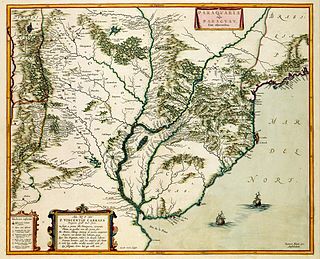
The history of Paraguay encompasses thousands of years of human habitation. Both agricultural and nomadic Guaycuruan lived in the region at the time of the Spanish Conquest. It became a relatively neglected part of the Spanish Empire due to its isolation and lack of mineral wealth, nonetheless a small group of Spanish settlers came to reside in the area, increasingly intermarrying with native women to produce a mestizo population. In the 17th and 18th centuries, Jesuit missionaries organized the natives into planned communities known as reducciones, and the experiment gained notable attention in Enlightenment Era Europe.

José Gervasio Artigas Arnal was a soldier and statesman who is regarded as a national hero in Uruguay and the father of Uruguayan nationhood.

The Argentine War of Independence was a secessionist civil war fought from 1810 to 1818 by Argentine patriotic forces under Manuel Belgrano, Juan José Castelli, Martin Miguel de Guemes and José de San Martín against royalist forces loyal to the Spanish crown. On July 9, 1816, an assembly met in San Miguel de Tucumán, declaring independence with provisions for a national constitution.

The Viceroyalty of the Río de la Plata meaning "River of the Silver", also called the "Viceroyalty of River Plate" in some scholarly writings, in southern South America, was the last to be organized and also the shortest-lived of one of the viceroyalties of the Spanish Empire in the Americas. The name "Provincias del Río de la Plata" was formally adopted in 1810 during the Cortes of Cádiz to designate the Viceroyalty of the Río de la Plata.
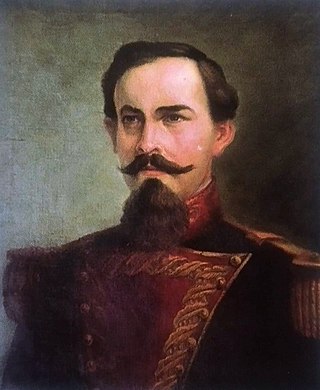
Fulgencio Yegros y Franco de Torres was a Paraguayan soldier, landowner and the first head of state of independent Paraguay. The town of Yegros is named in his honor.
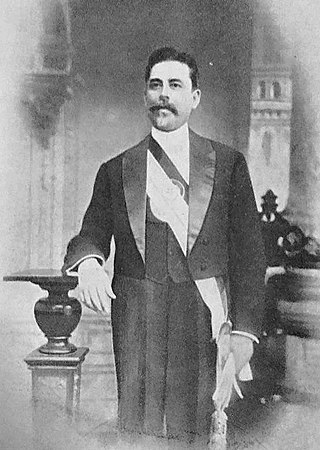
Benigno Asunción Ferreira was President of Paraguay between the end of 1906 and 1908. He was a member of the Liberal Party.

Pedro Juan Caballero was a leading figure of Paraguayan independence. He was born in Tobatí, a town located Cordillera Department of Paraguay which was then part of the Spanish Viceroyalty of the Río de la Plata. He was one of the major leaders of the Revolution of May 14, 1811, despite being six years younger than the leading figure of Independence period Fulgencio Yegros and 20 years younger than the future dictator of Paraguay José Gaspar Rodríguez de Francia. In 1820 he was accused of being involved in the conspiracy against Francia, and committed suicide in his cell on July 13, 1821. The Paraguayan city of Pedro Juan Caballero is named after him.

The Paraguay campaign (1810–11) of the Argentine War of Independence was the attempt by a Buenos Aires-sponsored militia, commanded by Manuel Belgrano, to win the royalist Intendency of Paraguay for the cause of May Revolution. In Paraguay it is considered as their War of Independence.

Juan Larrea was a Spanish businessman and politician in Buenos Aires during the early nineteenth century. He headed a military unit during the second British invasion of the Río de la Plata, and worked at the Buenos Aires Cabildo. He took part in the ill-fated Mutiny of Álzaga. Larrea and Domingo Matheu were the only two Spanish-born members of the Primera Junta, the first national government of Argentina.

The Casa de la Independencia Museum is a history museum and historic house located in Asunción, Paraguay.
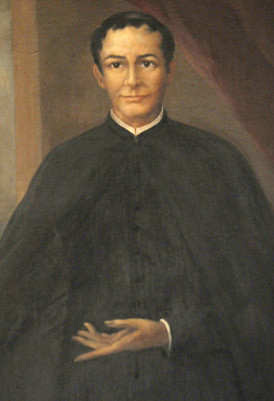
Francisco Javier Bogarín was a Catholic priest and teacher who actively participated in the process of independence of Paraguay. Born in Carapeguá, Paraguarí Department, 66 kilometers from Asunción, in 1763. For a couple of months in 1811 he was a member of the five-man governing junta of Paraguay.

Fort Borbón is a fort located in the Paraguayan Chaco; it was established to provide protection from the natives and Portuguese. After the Portuguese were expelled by Gaspar Rodríguez de Francia, it was changed to its present name Fort Olimpo.

Juan Hipólito Vieytes, was an Argentine merchant and soldier. He was the son of Juan Vieytes and Petrona Mora Fernández de Agüero. His family's house was at 133 Calle Real in front of the central square.
The Battle of Tacuarí was a battle in Southern Paraguay between revolutionary forces under the command of General Manuel Belgrano, member of the Primera Junta government of Argentina, and Paraguayan troops under colonel Manuel Atanasio Cabañas, at the time at the service of the royalists.

Paraguay–Spain relations are the current and historical relations between Paraguay and Spain. Both nations are members of the Association of Spanish Language Academies and the Organization of Ibero-American States.
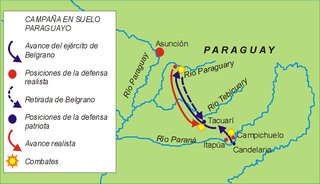
The battle of Paraguarí took place on January 19, 1811, in Paraguarí, Paraguay, between the patriot army led by Manuel Belgrano and the Royalist army located in Paraguay led by Bernardo de Velasco. The battle would end with a Paraguayan victory; but it boosted confidence in the local population to declare themselves independent from both Buenos Aires patriots and royalists months later.
Below is the timeline of Paraguayan history.

Manuel Canaveris was an Argentine army officer, who took part in the defense and reconquest of Buenos Aires during the English Invasions. He served under Colonel Ignacio Álvarez Thomas in the 4th Regiment of Buenos Aires, participating in the Campaigns to the Interior of the Provinces of 1810.

The independence of Paraguayde facto started on 14 May 1811 after the Revolution of May 14 when a local ruling junta was created. In early 1811 Paraguayan forces had repeatedly defeated the Argentine army which considered Paraguay to be a break-away province. On 12 October 1813 the Paraguayan Republic was proclaimed. Officially, independence was proclaimed only on 25 November 1842. Paraguayan independence was assured only after the Paraguayan War, when the Empire of Brazil resisted Argentine offers to divide and annex the country.
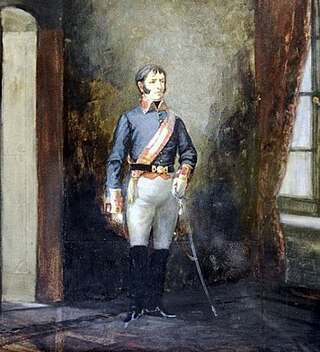
Bernardo Luis de Velasco y Huidobro was a figure in the Spanish American wars of independence, the last Spanish governor of the Intendency of Paraguay and a commander of royalist military forces in the war. He was deposed by the congress celebrated in Asunción on 17 June 1811. He was born in Villadiego, Burgos, Spain.


















